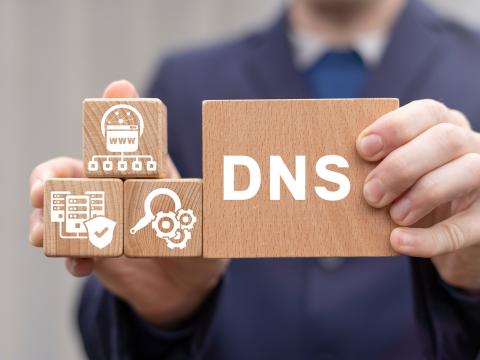Using Information Mandates A Military of One
Services unify efforts to share data.
Although experts agree that the vast majority of future military operations will be fought by joint forces, the U.S. military’s information technology continues to be somewhat fragmented. To take advantage of all the benefits of information operations during a mission, systems used by all the forces and at all levels must be able to talk to each other. Numerous technologies have been developed that enable this capability; however, the challenge is larger than technology.
Information does not distinguish between military uniforms or service ranks. It is not limited by borders drawn on a map. It can be deployed and employed to coordinate a battle or deliver humanitarian aid. Information is truly purple. The U.S. armed services recognize that, when fighting as a joint force, information is a powerful common denominator. Moving data quickly from the top down, the bottom up and everywhere in between improves situational awareness, shortens battles and saves lives.
The U.S. Joint Forces Command’s (USJFCOM’s) mission is to move beyond the coordination of systems to the integration and coordination of forces. This effort surpasses connecting computers or acquiring radios with multiple capabilities. It is aimed at transforming the way the services operate by acting as a catalyst for joint force integration, training, experimentation, doctrine development and testing.
The USJFCOM, headquartered in Norfolk, Virginia, is one of nine unified commands that bring all branches of the armed services under one commander in chief. Some of the unified commands have geographic areas of responsibility, while others oversee functional areas. The USJFCOM is unique in that it has both geographic and functional responsibilities. It is also the primary joint force trainer, integrator and provider and plays a significant role in implementing Joint Vision 2010 as well as in conducting work toward fulfilling Joint Vision 2020.
Established in 1999, the USJFCOM evolved to its current form from the U.S. Atlantic Command. It reports to the Secretary of Defense through the Joint Chiefs of Staff and directs several subunified commands, including the Special Operations Command, U.S. Forces Azores and the Iceland Defense Force. Task forces that report to the USJFCOM include Joint Task Force Six and Joint Task Force–Civil Support. Joint force activity centers include the Joint Warfighting Center; Joint Command, Control, Communications, Computers, Intelligence, Surveillance and Reconnaisance Battle Center; Joint Warfare Analysis Center; Joint Communications Support Element; Joint Forces Intelligence Command; Joint Personnel Recovery Agency; Cruise Missile Support Activity; and the All Service Combat Identification Evaluation Team.
Getting the services from today to tomorrow is the way Brig. Gen. Anthony W. Bell, Jr., USAF, director for command, control, communications and computer systems, USJFCOM, describes the vision for the command. “Coordinating is important, but integrating is much more powerful, and the Joint Forces Command’s role is integrating. We have joint forces, but it’s more than just the forces. The whole doctrine and training and organization that go into making sure that the force can fight effectively as a joint force must be integrated. The information systems piece is an important part of this effort,” Gen. Bell says.
Gen. Henry H. Shelton, USA, chairman of the Joint Chiefs of Staff, supports this viewpoint. Instantaneous communications facilitated by the Internet and 24-hour news television programming has contributed to shortening the “flash to bang” time. In response, military forces must be flexible and responsive enough to undertake multiple tasks in multiple locations simultaneously. This means that the armed forces must be capable of rapid decisive operations (RDOs). According to Gen. Bell, the experiments that the USJFCOM conduct are aimed at developing the joint operational requirement for RDOs.
Millennium Challenge 2000 was the command’s first joint experiment. It used real-time data from all of the services’ major field experiments. The information superiority/command and control experiment tested a concept wherein all of the services could be linked to a common virtual database. Being able to share this type of information during an actual mission could solve problems troops have faced in locating mobile ground targets or processing a multitude of intelligence data.
Planning for Millennium Challenge 2002 is underway. Gen. Bell relates that this experiment will incorporate modeling and simulation plus live fire with a view to developing the joint operational requirements for RDOs. The J-9, the joint experimentation and integration sector, will be the lead in this endeavor, and information and activity will be transitioned to the J-7, the joint training sector. “We want to demonstrate how, through effects-based operations, we can achieve a rapid, decisive victory,” the general says.
From the technical standpoint, interoperability continues to be one of the biggest challenges the military faces primarily because the services continue to operate with legacy systems. Some promising new technologies exist; however, the services do not modernize annually. The USJFCOM is addressing this issue by setting both short- and long-term goals, the general says. “If we are going to realize the vision of Joint Vision 2020, we have to do some things, and we have to start now,” he contends.
To this end, the command has identified capstone requirements in four areas: the Global Information Grid (see page 23, information dissemination management, theater missile defense and combat identification. These requirements provide direction for program managers, who are responsible for systems acquisition. Interoperability is no longer a negotiable item; it is now considered a key performance requirement, the general says. Although interoperability is now mandatory, it will be several years before all of the systems that are purchased today are fully operational in the field, he adds.
In the more immediate future, the command has identified two integration issues that are currently being addressed. The command has partnered with the Joint Theater and Air Missile Defense Organization to focus on datalinks between air platforms. Originally, these systems were designed in a stovepiped manner. The cost of modifying an aircraft is significant, the general says. Substantial energy is going into this project because it will provide accurate information to the warfighter. New equipment is being employed; however, this effort will take some time, he adds.
In addition to facilitating air-to-air and air-to-ground communications, the command is taking on integration issues that involve soldiers in the field. The USJFCOM is working with the U.S. Army and U.S. Marine Corps to improve the exchange of information between commanders and has made substantial progress in this area, the general says. Some developing technologies offer potential solutions, he adds.
While sharing information among the U.S. services poses challenges that the command is addressing, information operations in the coalition environment present problems that are not as easily solved. A good solution does not exist today, Gen. Bell says. “There are some promising technologies, and we are working within the Joint Forces Command on advanced concept technology demonstrations to be able to allow allies access to information through technologies that are similar to private key infrastructure. Through the National Security Agency [NSA], there are some encryption technologies that allow us to share information, but we continue to struggle with the challenge. In an operational environment, sufficient information is shared to allow the coalition to operate effectively. Clearly, this is one of the things we have to address and resolve. Quite honestly, it is more of a policy issue than a technology problem. The NSA is crucial to solving this problem,” the general states.
It is the operational environment on which the USJFCOM primarily focuses, and the general believes that information is the key to success. “Being able to share awareness, control and direct forces quickly and being agile in the employment of forces all depend on information. I don’t want to overstate the value of information, but it is like enabling a blind man to see. If you can have access to information that you trust, that you’re willing to make decisions on, it allows you to do so many things in terms of situational awareness. You can determine if you can operate with relative impunity or if you need to dedicate resources to force protection. It enables you to be agile and precise. Having access to that information quicker than the adversary is becoming more important because he who acts quickest wins. We want to be able to win the away games by a lopsided margin,” Gen. Bell opines.
Although information operations are generally associated with actual missions, they are also critical in training. Earlier this year, the command initiated exercise unified endeavor, a computer simulation-driven event that provided realistic crisis scenarios to train a joint force commander and staff for an operation that would require forces from all services. Approximately 300 military commanders from the four services took part in the initial academic portion of the three-phase exercise at the command’s Joint Warfighting Center, Suffolk, Virginia.
Not only is the value of information increasing, but also the number and types of threats are growing as well. Adversaries are more likely to attack asymmetrically, the general believes, and this situation must be taken seriously. In addition to facing conventional weapons, the joint forces may face viruses and distributed denial of service attacks on their information systems. “All of the armed forces have put a great deal of time and effort into addressing information protection. Now, does that mean that we’re not vulnerable? No, it doesn’t,” the general acknowledges.
Although cyber-based threats are an ongoing concern, Gen. Bell expresses similar apprehension about conventional threats that are changing and growing. One of the USJFCOM’s missions is to provide military support to civilian agencies if weapons of mass destruction are used in the continental United States. “We are just getting started with this, and we’ve got to do something in the near term,” the general states.
The command continues to develop programs and exercises that examine the role information systems will play in future missions. “So many good people are working toward accomplishing the goals set out in the joint vision statements,” Gen. Bell says, “that I would be surprised if they were not met.”
Coordination Key to Defending National Infrastructure The U.S. Defense Department should take action to ensure that defense systems fully exploit Internet technologies to provide adequate defense of the United States’ national infrastructure, says Victor A. DeMarines, former chief executive officer of The MITRE Corporation, Bedford, Massachusetts. If the United States does not move aggressively in this arena, it could become a victim of exploitation of those same technologies by potential adversaries, DeMarines believes. He recommends that the U.S. Joint Forces Command, Norfolk, Virginia, take the lead in this effort. “With the advent of the Internet, enemies with limited resources have the potential to do serious damage to our economic and military infrastructure. This makes our ability to use and defend the cyberspace frontier paramount, and it means we need to restructure and refocus many of our approaches to developing defense information systems to thoroughly integrate defensive and offensive Defense Department operations,” he says. Specifically, DeMarines recommends that the U.S. Joint Forces Command (USJFCOM) be given oversight and funding control for developing the command and control (C2) nervous system that supports joint operations. “Currently, the funding needed to get command and control to work well between, say, the Army and the Navy, will usually take second place to the more immediate needs of each service,” he states. “The result is a lot like building a car in which each tire is controlled by a different steering wheel. In a military crisis, that kind of coordination problem can be a disaster just waiting to happen.” DeMarines proposes leveraging successes in smaller-scale C2 programs to create a model for the entire Defense Department. Funding and reviewing core C2 systems and features would be centrally orchestrated to ensure development of an integrated, fully operational command nervous system capable of rapid, agile responses to crises. “If you do something daily, it’s a lot less likely to surprise you unpleasantly during a crisis,” DeMarines offers. “Just as the best car to drive in an emergency is the one you drive every day, the best command and control system for a military crisis is the one that everyone has been using on a daily basis for less critical operations.” Powerful commercial software applications are what make this approach possible, DeMarines points out. “The old days of waiting years to see even minimally functional software are largely gone—and good riddance to them. We need to expand on the successes we have already seen in smaller C2 systems that allow end users to work with developers almost from the beginning. Using this model, the Defense Department’s core command and control systems would be brought together often. Those things that needed fixing would be fixed using funds controlled by USJFCOM,” he states. Initially, the USJFCOM would sponsor a flexible blueprint for integrating existing C2 systems. It would create the opportunity to incorporate new disruptive technology and operational concepts that change traditional roles. It would become a key player in the development of the Global Information Grid that many in the Defense Department agree is needed to approach a single model, as opposed to the integration of many diverse models. As seen in smaller systems, this blueprint approach allows continuing innovation and exploitation of new technologies while it is implemented. To help reconcile the often-conflicting pressures of consolidation and innovation, DeMarines recommends that an office within the USJFCOM be designated to ensure broad, daily use of the system as it is developed. The Defense Department should also consolidate and focus its work on cyberwarfare, in which attacks and responses take place in the cybernetic landscape of networks, rather than on conventional battlefields, he proposes. “Cyberwarfare, in both its defensive and offensive forms, must be treated with the same seriousness and focus with which we currently treat physical forms of warfare. The Internet continues to expand into nearly every aspect of our national infrastructure, including automated systems. This means that the billions of dollars of damage we saw with the LoveBug virus is only the tip of the iceberg. As more systems become dependent on networked computers, attacks by adversaries can, in principle, become both devastating and deadly, especially if combined with coordinated physical attacks. Defensive cyberwarfare must be built into all levels of the command and control, and other electronic systems of the military. The CIO [chief information officer] function at the Office of the Secretary of Defense should provide leadership for this activity,” he says. The offensive use of cyberwarfare is a warfighter function and should remain with the commander in chief, U.S. Space Command (CINCSPACE), at least for the near future, DeMarines contends. “Offensive cyberwarfare is focused on taking out the information capabilities of an opponent. As we saw in the Gulf War, a good cyberoffense can drastically reduce casualties on all sides by making our own forces effectively invisible to adversaries and disrupting the enemy’s ability to function.” The placement of the offensive cyberwarfare office under CINCSPACE would keep it focused on the battlefield and at the same time consolidate and help synergize currently fragmented efforts at developing offensive technologies and strategies, he says. To promote synergy and cross-fertilization between the separate defensive and offensive cyberwarfare offices, DeMarines recommends the creation of a cyberwarfare laboratory under the jurisdiction of the Space Command. Ideally, this laboratory would provide a lively, informative battleground in which simulated battles would be used to test and exercise capabilities to engage in and defend against cyberwarfare. DeMarines’ final recommendation could prove to have the most impact on the Internet’s everyday users. He suggests that the government support the creation of a nonprofit private-sector national information assurance institute that would encourage the exchange of security-related information technologies between the public and private sectors. This new institute would promote participation by industry, universities and not-for-profit companies involved in security- and privacy-related information technologies. “Anyone who has apprehensively sent a personal credit card number across the Internet can appreciate the potential value of such an institute,” DeMarines says. “It could greatly benefit all users of the Internet.” Terry B. Bollinger is a principal information systems engineer at The MITRE Corporation and an assistant editor for IEEE Software. |




Comments